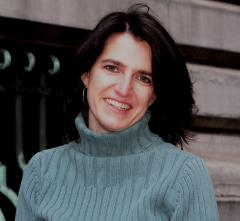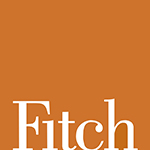 In Fall 2014, Erica C. Avrami joined the Columbia GSAPP faculty as the James Marston Fitch Professor of Historic Preservation. Prof. Avrami is a graduate of Columbia College and received her MS in Historic Preservation from Columbia University. Her PhD is in Planning and Public Policy from Rutgers University, where her research focused on the intersection of sustainability planning d preservation. She will teach courses in preservation planning in addition to the popular seminar courses she previously taught, Sustainability and Preservation and International Issues in Preservation.
In Fall 2014, Erica C. Avrami joined the Columbia GSAPP faculty as the James Marston Fitch Professor of Historic Preservation. Prof. Avrami is a graduate of Columbia College and received her MS in Historic Preservation from Columbia University. Her PhD is in Planning and Public Policy from Rutgers University, where her research focused on the intersection of sustainability planning d preservation. She will teach courses in preservation planning in addition to the popular seminar courses she previously taught, Sustainability and Preservation and International Issues in Preservation.
Q: Since graduating form the HP program, you have led an impressive career, including over six years with the World Monuments Fund and completing your doctorate degree in Planning and Public Policy. What are you looking forward most in the transition to full-time teaching?
A: I feel very fortunate to have been able to work in a variety of professional capacities, while also keeping a hand in academia through my doctoral studies and adjunct teaching. Maintaining a dynamic exchange between practice and scholarship is important to a field like preservation, which engages a range of interrelated disciplines and technologies. Heritage-related theories, our understanding of history and stakeholders, as well as technical methods are all constantly evolving. So much can be learned by bringing the knowledge of other disciplines to bear on the preservation enterprise, and by ensuring a dialectical interplay between what we teach in the academy and what we practice in the field. As I make the transition to a full-time faculty member, I am most looking forward to reinforcing that dynamic with students, in the classroom and in field-based projects, as well as in research activities. by using practical experience to inform our philosophical understanding of how heritage functions within society, and vice versa, we can better prepare the next generation of preservationists to address the challenges on the horizon and ensure that preservation plays an integral role in a sustainable future.
Q: How do you plan to incorporate your extensive international work experience into the curriculum?
A: Working across borders and in different cultural contexts has been a tremendous privilege, affording the opportunity to engage with a variety of partners in a range of context — from post-disaster settings to ancient archaeological sites — as well as with construction typologies that are less common in the United States, such as earthen architecture. It has also been a humbling experience, as stepping beyond one’s backyard means confronting all the things one doesn’t know and questioning one’s understanding of the world. The field of preservation, with its many charters, standards, and regulatory guidelines, has normative tendencies. But we preserve architectural heritage because of its distinct qualities and the way it differentiates one built environment from another. The difference in what we preserve i.e. echoed in how we preserve, how different societies ascribe value to places of the past and make decisions about how to transmit those values to future generations. By employing international case studies in my courses and developing more overseas study and field opportunities for students, I hope to be able to use my past experiences as well as new opportunities abroad as important didactic tools. By looking at problems from a different perspective, in different social, economic, and environmental conditions, students can enhance their critical thinking skills and bring new knowledge to their understanding of US practice in global context.
Q: You assisted with the thirtieth anniversary celebrations of the program and will be involved in this year’s fiftieth anniversary celebrations. Where do you see this program in the next 20 years?
A: I believe preservation provides important benefits to society, but as a field we have not adequately demonstrated those benefits. As sustainability concerns mount and climate change compels significant changes in the way we manage the built environment, preservation will face tough challenges. The field has made some notable progress in making the case for how historic buildings can contribute to economic vitality and environmental protection, and this is important research for rationalizing the work of the preservation. However, we don’t preserve simply because it makes financial or ecological sense. Fundamentally, we believe historic preservation is good for society, but the research on how it benefits individuals and communities is lacking. How does preservation build social and cultural capital and enhance community cohesion? What contributions can it make toward social justice? How does decision-making about shared heritage facilitate participatory discourse and civil engagement? My hope is that, over the next 20 years, the field of preservation grapples with these questions and more, to better demonstrate how its work benefits people, not just places. As the pioneer in preservation education in the United States, Columbia’s program should be forging this new frontier and I hope I can play a contributing role in that exploration.
This Q&A was originally published in the GSAPP Historic Preservation Newsletter, Spring 2014.
